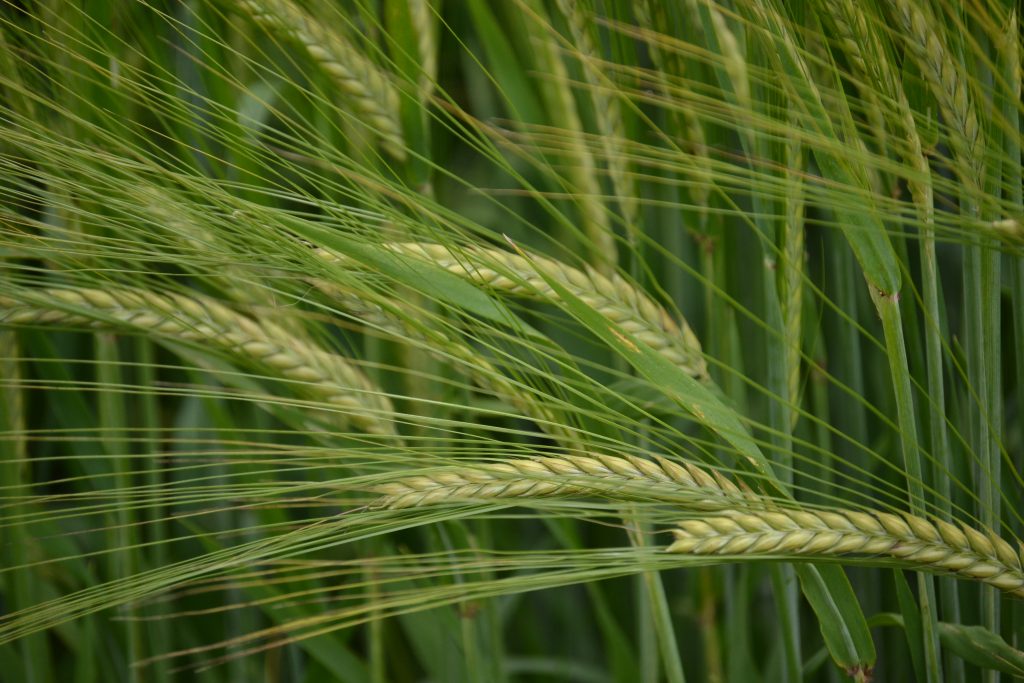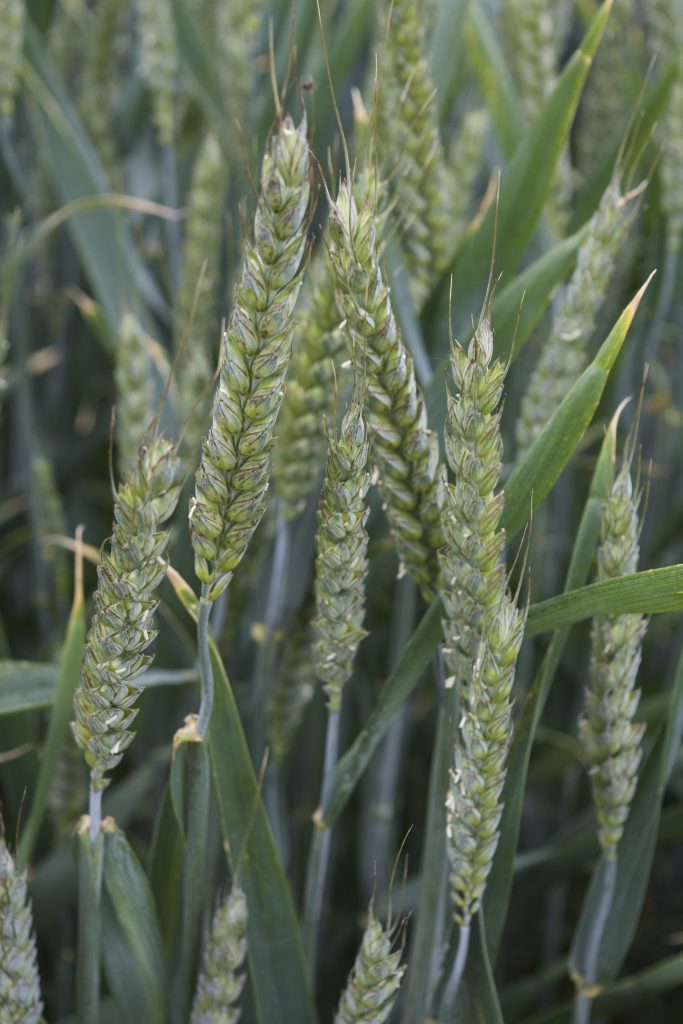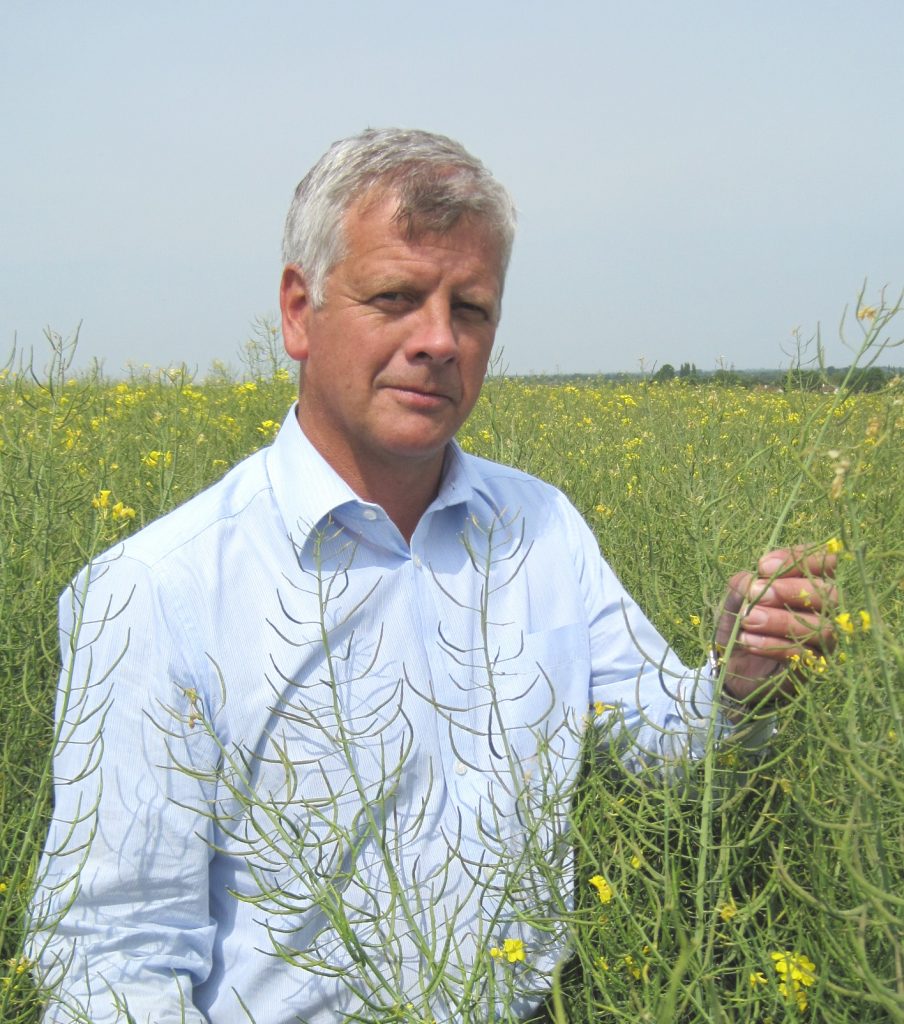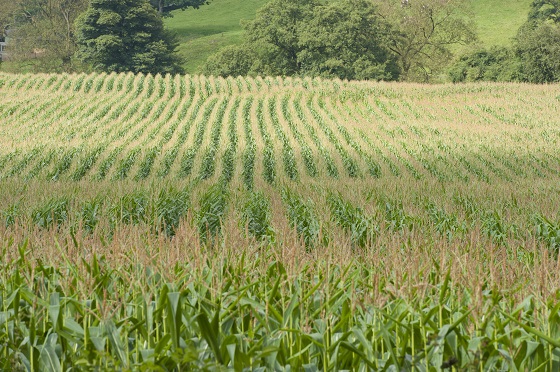Secure your market in the face of surging spring plantings
21st February 2017
Focus on lower market risk opportunities in your spring cropping and secure your outlets as early as possible this season, advises Agrii.
Focus on lower market risk opportunities in your spring cropping and secure your outlets as early as possible this season, advises Agrii head of crop marketing, Paul Taylor as another substantial increase in spring plantings is set to put serious pressure on key crop prices.
Speaking at a special early spring Masterseeds briefing this month, he explained that the major increase in spring seed demand being recorded by the business for the second year in a row will see supplies of spring barley, peas and beans, in particular, shooting-up.
“There will definitely be crops that struggle to find a good home this season,” he stressed. “The 600,000ha crop of spring barley we could well have, for instance, would generate an exportable surplus of 750,000 tonnes. Yet the short sea European export demand for malting barley is only around 2 million tonnes and, while the weakness of sterling will help, we have to compete with France and Denmark both of whom have significant freight cost advantages.
“We’re starting to run out of domestic customers for spring oats and exports really aren’t price competitive,” Mr Taylor added. “Equally, many premium pea and bean markets are shaping-up to be more than well-supplied.
“All this puts the onus on identifying cropping opportunities with a lower market risk to serve particular markets and securing them as early as possible with effective contracts. As buyers, we have putting a lot of effort into doing just this on behalf of our growers in recent years, identifying particular consumer needs, matching these to varieties and developing industry-wide seed-to-supply partnerships to produce them on contract.”
Despite doubling the volume to 65,000 tonnes in 2017 to meet Budweiser’s full UK malting barley requirement, Paul Taylor reported that all Agrii/Glencore/Crisps Malting contracts with AB InBev for the specialist heavy land barley, Explorer have already been filled.
However, he pointed out that growers can still take advantage of flexible Agrii contracts for Propino, RGT Planet and KWS Irina with Glencore, alongside their Scotgrain contracts for Concerto, Chronicle and Laureate.

Growers can still take advantage of flexible Agrii contracts for varieties like RGT Planet.
“If you can handle them, naked oats are a good opportunity,” he observed. “Unlike conventional oats, demand – for gluten free human and pet foods and high quality horse feeds – remains well ahead of supply. As a result, we have some attractively-priced contracts offering premiums of up to £45/t over feed wheat available through GB Feeds.
“We also have useful contracts for Sakura and Kabuki marrowfats, Daytona large blues and Mantara maple peas too. And, in an exciting new development taking advantage of Glencore’s global reach, we have secured a major opportunity to supply strong demand for human consumption yellow peas in India and China. At a £50/t ex-farm premium over a fixed base price, Mascara contracts for 2017 are especially attractive for a simple specification carrying no risk of bleaching issues.”
Emphasising Agrii’s commitment to work with key industry partners to develop market opportunities and marketing mechanisms enabling growers to minimise risk as well as improving their earning power, Mr Taylor went on to suggest that 2017 could well be exactly the right season for many to make the most of pool marketing.
“With a significant over-supply of quality wheat as well as barley on the cards and currency volatility a key market driver, de-risking a proportion of your crops through a marketing pool this season looks like being especially valuable,” he said. “That way you avoid harvest discounts and allow professional marketeers to take the greatest possible advantage of what could well be a roller-coaster of a year for prices.
“The Harvest Trust pools we are relaunching with Glencore for wheat, barley, rapeseed and beans for the coming season to help here are available for movement at harvest or to mid-January, with full-season wheat and barley pools for movement through to the end of May. As well as providing extra security alongside direct selling through traders or the Grainman and Grainmate programs, they have optional staged cash-flow payments built-in.
“However you decide to market your crops this season, planning to take advantage of the best market opportunities as they become available and acting early and decisively to secure them will be more important than ever,” concluded Paul Taylor.
Agronomy key
Agronomy should be the most important consideration in wheat variety selection for the coming season, with varieties chosen first and foremost for their ability to address the farm’s most pressing production challenges.
“Whatever wheats you’re growing, reliable production at the least cost per tonne has to be the priority in a market set to be well-supplied with quality,” stressed Agrii seed trials manager, Colin Patrick at the Masterseeds briefing. “This puts the onus firmly on varieties best able to cope with your particular farm challenges to secure the yields that will, more than ever, be your key profitability driver.
“Our extensive testing of existing and emerging new varieties at our own sites across the country, run under more commercial growing regimes than those used for the RL, highlights major differences in their ability to perform under pressure from foliar diseases, lodging and weed competition, not to mention different drilling dates.
“As well as providing our growers with the most up-to-date agronomic intelligence for variety selection, the Advisory List we produce each year, combining our results with those from official trials, pinpoints areas of agronomy requiring particular attention to achieve the desired performance.”
So what specific agronomy-based guidance is the Agrii trials network giving on new variety choices for the coming season?
Well, it clearly identifies LG Sundance and Dunston as especially valuable for levels of disease resistance that offer the greatest spraying flexibility.
“If Septoria tritici is your main challenge, then alongside Graham, which currently offers class leading levels of resistance, both these varieties stand out for their combination of resistance ratings and untreated yields,” reported Colin Patrick.
“LG Sundance has an eyespot weakness that concerns us as a second wheat while Dunston carries Pch1 resistance, making it a very good replacement for long-time favourite, JB Diego which is really showing signs of its age these days.
“KWS Zyatt is also shaping up to be a good Group 1 choice here, with a strong Septoria rating, high untreated yield and Pch1 eyespot resistance. Yellow rust will need watching, though, as we’ve seen noticeably higher levels in our trials that its RL score would suggest.

KWS Zyatt.
“We like Bennington too for its consistent high yields and strong export potential and see it as a useful Leeds replacement for those not targeting distilling markets,” Colin Patrick continued. “Our work however suggests it’s weaker on brown rust than it looks on the RL”
“Alongside individual variety resistance, of course, the yellow rust diversification work we’ve been maintaining with the support of Dr Rosemary Bayles needs to be taken into account in variety choice,” he added. “Designed as an aid to risk management across the farm, it allows agronomists and growers to select varieties less likely to be universally affected by any changes in the rust population.”
Agrii trials under high lodging pressure conditions suggest that of the newcomers, Bennington and Dunston are the most suitable varieties where pressures are likely to be high, while LG Sundance – like a number of the other new soft feed varieties – is probably best avoided.
As far as weed competitiveness is concerned, KWS Zyatt and Dunston have been showing similar overall strengths to JB Diego, Sykfall and KWS Siskin in initial screening at the Stow Longa black-grass technology centre.
Colin Patrick did point out, however, that the clear differences in relative variety competitiveness they have been seeing at different sowing dates need to be factored into decision-making here.
“In addition to performance under locally optimised input regimes, disease scores from the most recent season, lodging ratings under high pressure conditions and weed competitiveness rankings, our trial work is adding valuable broadened Fusarium resistance, maturity and drilling window guidance to the RL data,” he concluded.
“This will be of particular value in helping growers choose the best varieties for their own farm conditions and manage them as cost-effectively as possible for the greatest overall profitability.”
OSR traits
The latest Masterseeds research underlines the importance of prioritising a number of vital traits alongside high gross output in the oilseed rape mix to achieve consistently good farm performance – most importantly, autumn and spring vigour, all-round disease resistance,
pod shatter resistance and, where needed, herbicide tolerance.
Agrii seed technical manager, David Leaper pointed out that National and Recommended List testing shows almost every modern variety is well able to deliver high gross outputs in small plot trials. However, to deliver consistently above average performance under commercial farming conditions he stressed they must have more than just a high output potential.

Agrii seed technical manager, David Leaper.
“In particular, winter rape crops have to be resilient enough to cope with stresses like later-than-ideal sowing, less-than-ideal seedbeds and spray timings, persistent pest problems and, increasingly, extreme weather variations,” he stressed.
“In our experience, this means they need to develop rapidly in both the autumn and spring, be as resistant as possible to phoma and light leaf spot – not to mention turnip yellows virus, clubroot and verticillium – and stand-up well through to harvest with minimal seed shedding.
“The varieties that do so invariably seem to come out at or near the top of the large scale trials we run across the country under typical farm regimes. They are also proving much more popular and, crucially, longer-lasting with our growers.
“We record substantial differences between the 30+ varieties we trial each year in the vigour with which they establish and develop ahead of winter and the earliness with which they grow away in the spring,” explained David Leaper. “The better varieties in both respects are better able to grow away from flea beetle, slug and pigeon attack and tolerate early phoma and light leaf spot infections.”
High levels of combined phoma and light leaf spot resistance also make an important contribution to performance consistency, with Agrii trials highlighting their clear association with the highest levels of untreated yield. This gives the greatest possible leeway in both the extent and timing of fungicide treatment from late autumn to early spring when spray days are at their most limited.
“As well as phoma and light leaf spot resistance, we see growing value in the clubroot, TuYV and verticillium resistance traits becoming much more available in modern, high gross output genetics,” David Leaper added.
“Replicated small plot trials are allowing us to categorise varieties clearly by their level of verticillium wilt. Our involvement in a national assessment of the impact of TuYV is highlighting how much yield we may be losing from this disease and the value of the resistance now available. At the same time, the increased incidence of clubroot our agronomists are encountering across the country these days is demonstrating the growing importance of addressing this issue with the best genetics.”
Pod shatter resistance, which can protect crops against inclement weather in the run up to harvest and make a major contribution reducing OSR volunteer problems in the rotation, is another valuable characteristic David Leaper welcomes for its much wider availability. Originally confined to varieties from Dekalb, he’s now seeing it in hybrids from at least three other breeders.
Finally, he is finding the Clearfield system – involving hybrids conventionally bred to be resistant to the herbicide, imazamox – invaluable where cruciferous weeds are a problem, both in robbing yield and in high erucic acid contamination. With erucic acid contents of over 30% in charlock and wild mustard and 10% in cranesbill, he has no doubt that these weeds can be an important factor in claims and rejections.
“The Masterseeds 2017 winter OSR portfolio is based firmly on varieties we have selected for the combination of traits they bring alongside high gross outputs to improve the consistency of farm performance,” concluded David Leaper. “It extends to nine mainline ‘double low’ varieties – six hybrids and three conventionals – and five specialist types – one club root resistant, one Clearfield, one HOLL and two HEAR varieties.
“Together, we believe this provides everything our growers need to make the most of the undoubted value the crop offers with the least possible agronomic risk.”
Maize management
Despite the sheer number of different maize varieties on the market, choosing which to grow for forage or biogas need not be a complicated or time-consuming task. Not least, because greater emphasis on early crop agronomy almost certainly offers the greatest opportunity for most livestock and arable producers to improve their maize performance.
This was the typically forthright advice from Agrii forage crops specialist, Brendan Paul at the Masterseeds briefing, reflecting on the past season when the earlier maturing varieties that many growers moved to after the problems of 2015 matured far too quickly for the best results in the dry September.
“All the work we do reinforces my belief that growers should put less emphasis on what they grow and altogether more on how they grow it,” he insisted.
“For me, maize variety selection is simple. In most cases, it’s a choice between one or two decent varieties that mature at the right time for the farm conditions. Although, with the large areas involved for biogas production, a range of varieties with different maturities is advisable here to give a manageable schedule of drilling, crop protection and harvesting.
“In total, we’ve selected nine varieties we can be confident in from our trials to span the entire range of maturities for both favourable and marginal sites across the country – Rubiera and Avitus in the earliest category; then FieldStar, Gatsby, ES Capris and P7326 in the middle and Salgado, DKC333 and Atrium as relatively later maturers.
“Several of these have outstanding resistance scores for eyespot which can decimate crops. We’ve found including one of the best of these, Salgado, in mixes with earlier maturing varieties can do much to reduce eyespot risk as well as improving pollination and bringing the harvest forward without compromising yield.”
Whatever variety is being grown, Brendan Paul is adamant that early agronomy must be key focus for every crop.
“It costs as much to grow a bad crop of maize as it does to grow a good one,” he noted. “And, more often than not, the difference between the two comes down to the first six weeks.
“Maize is such a whimp early on. It needs TLC to get it going. In particular, it really struggles around the headlands as a result of compaction and, as it’s often grown in relatively small fields, these can be a rather large proportion of the crop.
“This makes minimising compaction at every opportunity and relieving any compacted areas ahead of drilling with effective sub-soiling essential for the best early root development.
“Also hugely beneficial, we’ve found in five years of trialling, is the root-boosting seed treatment, Take-off which we’re able to provide with six of our nine varieties. Typically, this speeds emergence by around three days, helping the crop to compete with weeds and grow away from slugs. Our trials across five sites have shown an average increase of more than 7% in dry matter yield and 10% in energy yield per hectare.”
As well as Take-off, Brendan Paul strongly recommends placing a starter fertiliser in a band just below and to one side of the seed. The best results he has seen in recent trial work – a 7% increase in dry matter yield over TSP – come from the specialist fertiliser, Maize Kicka treated with P-Reserve to maximise early phosphate availability.
Allowing for a 10% establishment loss under reasonable seedbed conditions, he recommends a sowing rate of around 110,000 to 113,000 seeds/ha to achieve the optimum 100-102,000 plants/ha maize population, increasing rates where sowing conditions are poorer or earlier than ideal. He stresses too the importance of the most effective control of weeds ahead of sowing and throughout the establishment phase.

